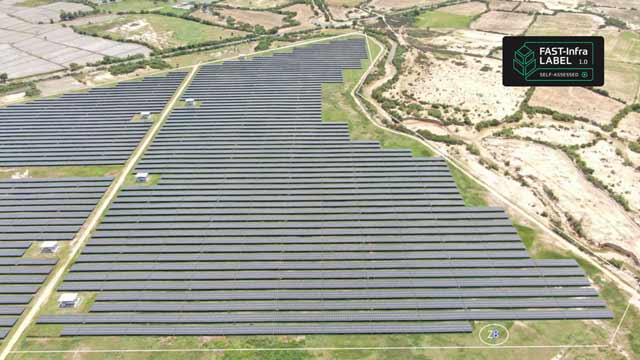.jpg)
Managing Climate Risks and Building Resilient Infrastructure: 3 Questions with Natalia Moudrak
What’s a Rich Text element?
The rich text element allows you to create and format headings, paragraphs, blockquotes, images, and video all in one place instead of having to add and format them individually. Just double-click and easily create content.
H1
H2
H3
H4
H5
H6


Static and dynamic content editing
A rich text element can be used with static or dynamic content. For static content, just drop it into any page and begin editing. For dynamic content,

add a rich text field to any collection and then connect a rich text element to that field in the settings panel. Vsadsadsdasdasdasdasdoila!
- A rich text element can be used with static or dynamic content. For static content, just drop it into any page and begin editing. For dynamic content, add a rich text field to any collection and then connect a rich text element to that field in the settings panel. Voila!
- t to that field
- t to that field
-
How to customize formatting for each rich text
How to customize formatting for each rich text
How to customize formatting for each rich text
Headings, paragraphs, blockquotes, figures, images, and figure captions can all be styled after a class is added to the rich text element using the "When inside of" nested selector system.
As climate risks intensify and infrastructure assets around the world face mounting exposure, building resilience into the foundation of infrastructure projects has become an urgent priority. In this conversation, we speak with Natalia Moudrak, Managing Director of the Climate Risk Advisory practice at Aon, to explore the critical role of climate risk data, re/insurance solutions, and forward-looking financing frameworks like the FAST-Infra Label.
Natalia brings strong experience in climate resilience and managing infrastructure risks. She is also a part of the Steering Committee of the FAST-Infra Label, where she helps shape its direction and technical work. In this interview, Natalia shares her views on the biggest challenges infrastructure faces due to climate change, how financial institutions can support resilience, and why the FAST-Infra Label could be a powerful tool to help build resilient infrastructure.
What are the biggest climate adaptation challenges facing infrastructure projects today?
The rising cost of natural disasters is a stark indicator. In 2024 alone, global catastrophe losses reached $368 billion, with only 40% of that insured. It marked the ninth consecutive year in which global losses exceeded the $300 billion mark. Beyond the financial toll, the human cost is even more sobering—18,000 lives were lost last year.
So what’s driving this trend? A convergence of factors: more people living in high-risk areas, higher-value assets being exposed, aging infrastructure that wasn’t built to withstand today’s extremes, the rapid loss of protective ecosystems, and a widespread delay in adopting resilient design practices. The result is a growing mismatch between the climate risks we face and the infrastructure we rely on.
The opportunity is equally clear. Building infrastructure right the first time is significantly more cost-effective than retrofitting it later. Research shows that the benefit-cost ratio of resilient design ranges from 4:1 to 16:1.
“If you are an owner or a long-term investor into new infrastructure assets, you absolutely should be asking the questions about what physical risks they are exposed to today and into the future, and how the proposed design tackles the most material exposures.”
What role do insurance and financial solutions play in helping infrastructure projects manage climate risks and build resilience?
The insurance industry and financial institutions are playing an increasingly strategic role in advancing climate resilience across infrastructure projects. Their impact can be understood through three key contributions:
- Providing Deep Risk Intelligence
Firms like Aon are investing hundreds of millions of dollars annually in climate data and analytics. These include in-house catastrophe models that assess acute risks like floods, hurricanes, or wildfires, and downscaled climate models that project how chronic risks such as extreme heat or drought may evolve. This intelligence helps project developers and investors understand the full risk profile of an asset, starting from the planning stage.
- Advising on Loss Control and Risk Mitigation
Beyond data, these institutions provide practical advice on how to reduce exposure. This means building in safer places and designing infrastructure to handle extreme weather conditions. For example, advising on elevated construction to reduce flood risk or using materials and structural systems that can endure high wind loads. These insights are often critical in shaping design choices that reduce vulnerabilities from the start.
- Translating Risk into Actionable Financial Terms
Perhaps most importantly, insurers and advisors help quantify the impact of resilience in terms that resonate with underwriters and financial sponsors. By illustrating the difference in probable maximum losses with and without resilience measures, they make the financial case for risk reduction. This information also helps tailor insurance programs during both construction and operations phases, improving coverage and pricing.
Meanwhile, financial institutions—from banks to pension funds—are increasingly screening for physical climate risks during due diligence. The goal is clear: to avoid investing in assets that could become unprofitable, uninsurable, or un-investable over time. By asking the right questions, these institutions are driving a powerful shift—sending a market signal that resilience is not just good practice, but essential to long-term value.
How does the FAST-Infra Label support and accelerate capital deployment toward sustainable infrastructure?
The FAST-Infra Label is gaining strong support across the infrastructure ecosystem—for good reason. It simplifies how sustainability and resilience are embedded into projects, and makes it easier for capital to flow where it’s needed most. Here are three key ways it supports this shift:
- A comprehensive and practical framework
The FAST-Infra Label is built around four core dimensions of sustainability: Environmental, Social, Adaptation and Resilience, and Governance. This comprehensive approach ensures that infrastructure projects are assessed not just for climate and environmental performance, but also for social outcomes and long-term resilience. For developers, it provides a clear and practical pathway to embed these priorities from the outset.
- An umbrella for global best practices
One of the Label’s greatest strengths is that it serves as an umbrella for existing sustainability standards and guidelines. This makes it much easier for project developers to demonstrate alignment with what different investors are looking for—without the burden of navigating multiple, separate certification processes.
- Market clarity for investors and lenders
For investors and lenders, the Label offers easy identification and comparability. The FAST-Infra Label Application Portal, developed by Bloomberg, streamlines project submissions for the FAST-Infra Label. By enhancing transparency and comparability, it simplifies due diligence for investors and supports informed investment decisions.
“The long term vision of success is that we hope to see evidence of superior financial performance for FAST-Infra labelled projects and, from an insurance standpoint, improved loss history. This will help with creation of incentives for resilient ways of building infrastructure projects, where these projects could eventually become their own asset class that is traded at a premium,”
Climate resilience is the foundation for future-proof infrastructure and investment. As the frequency and severity of climate events increase, integrating climate risk data, resilient design, and comprehensive frameworks like the FAST-Infra Label will be critical in delivering infrastructure that stands the test of time.

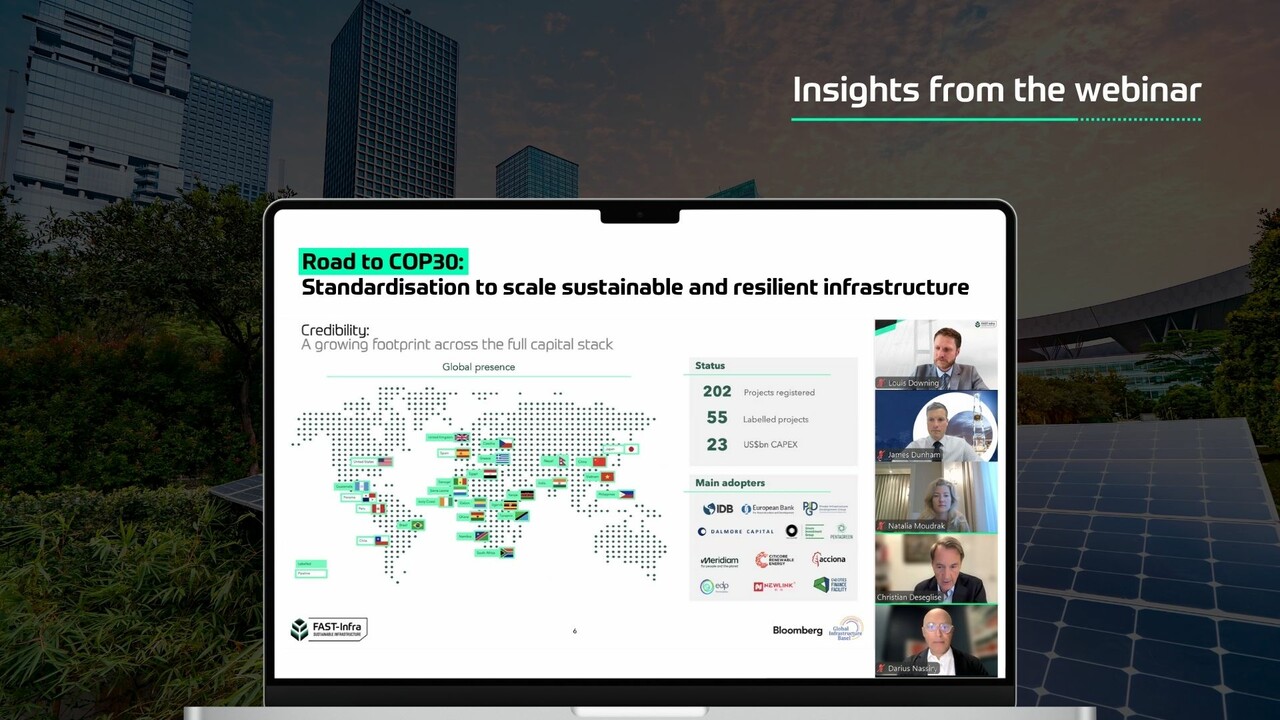


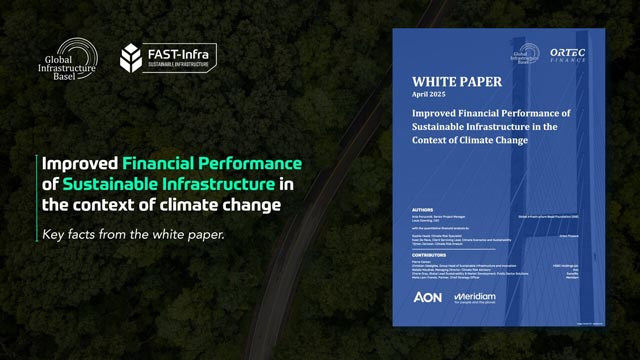


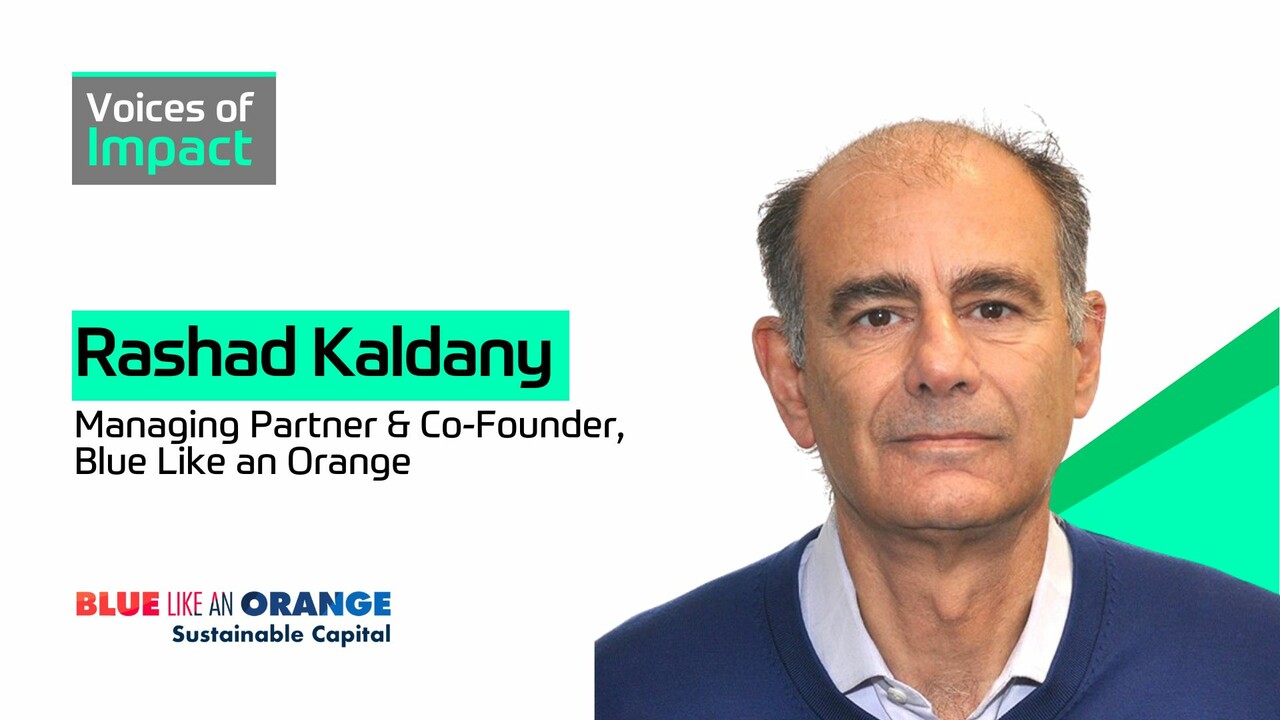

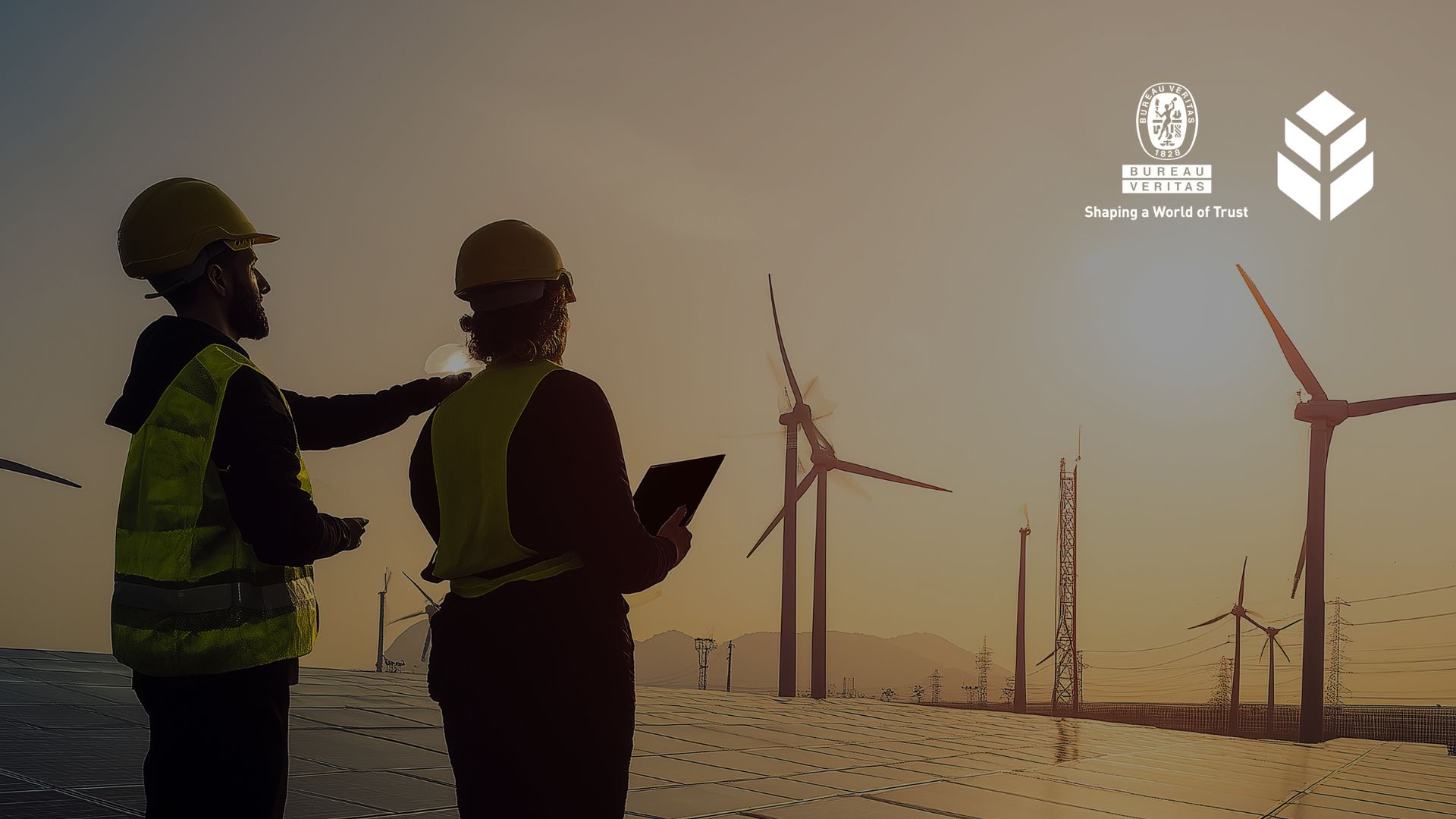
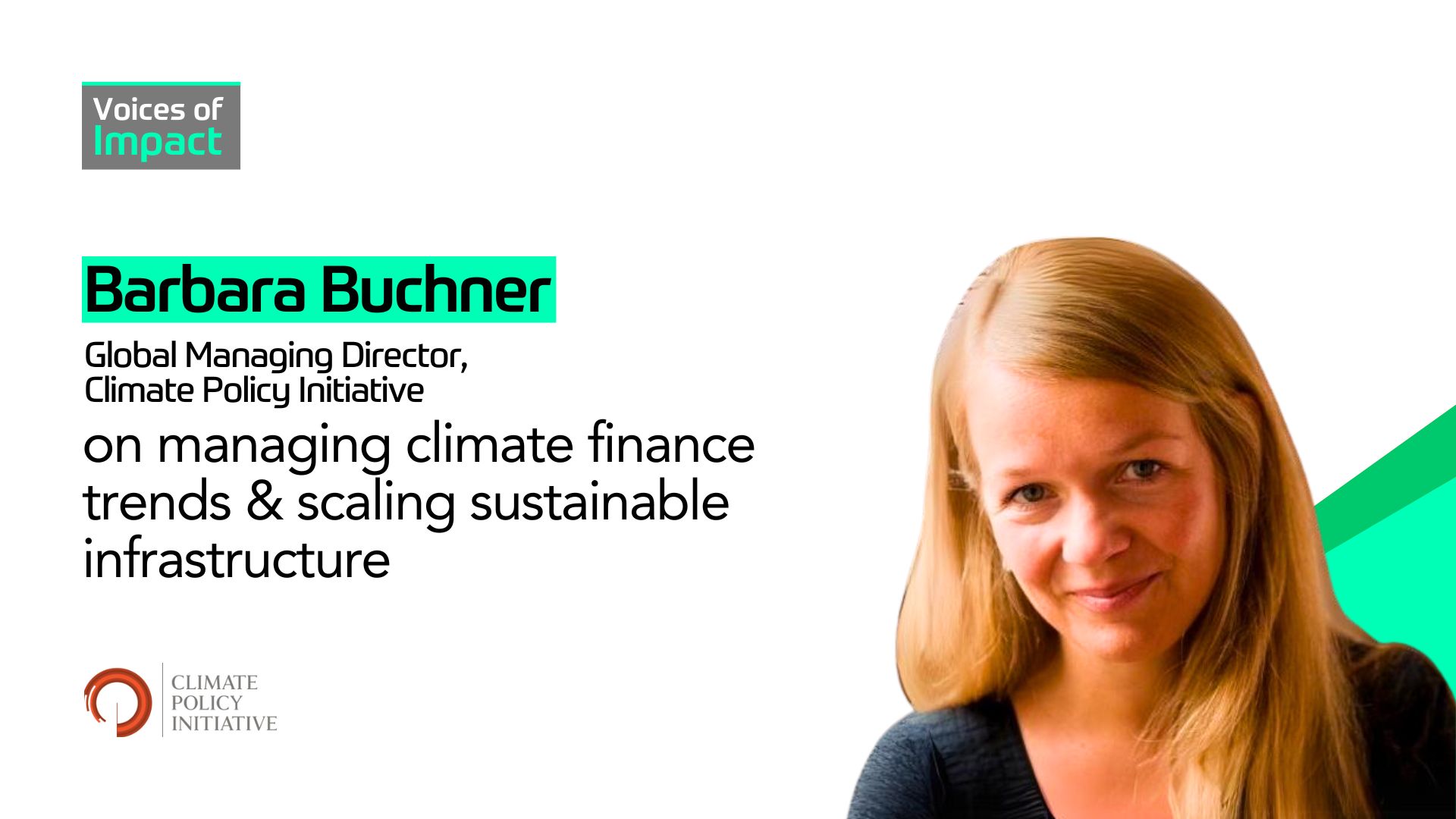
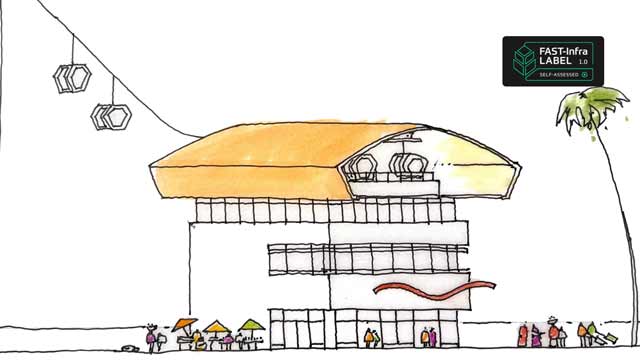






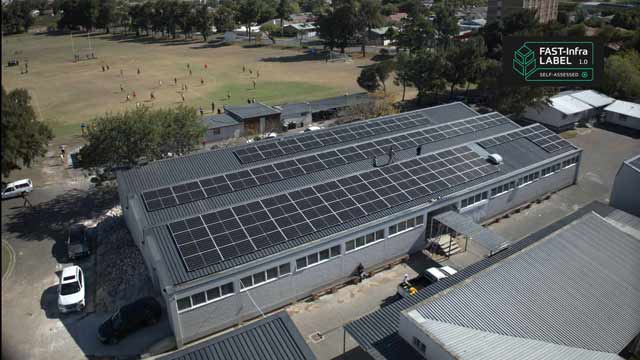

.jpg)




.jpg)
.jpg)
.jpg)
.jpg)
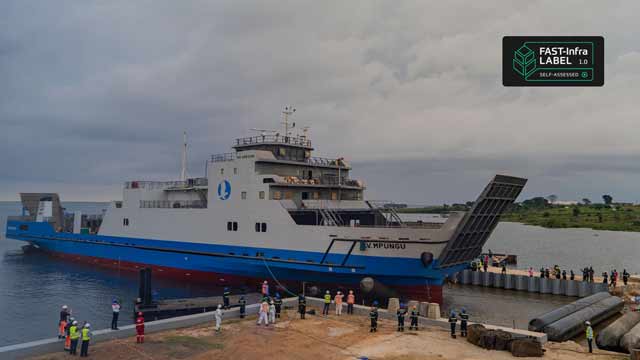
.jpg)




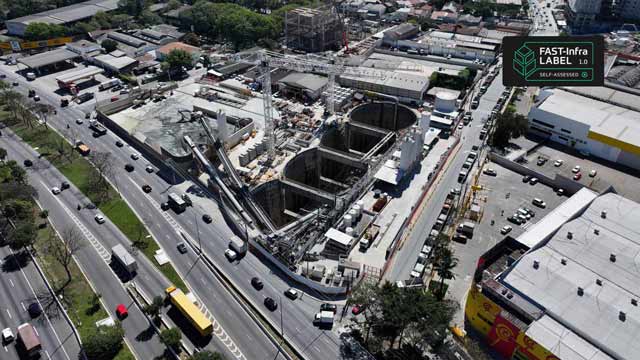













.webp)
.webp)


